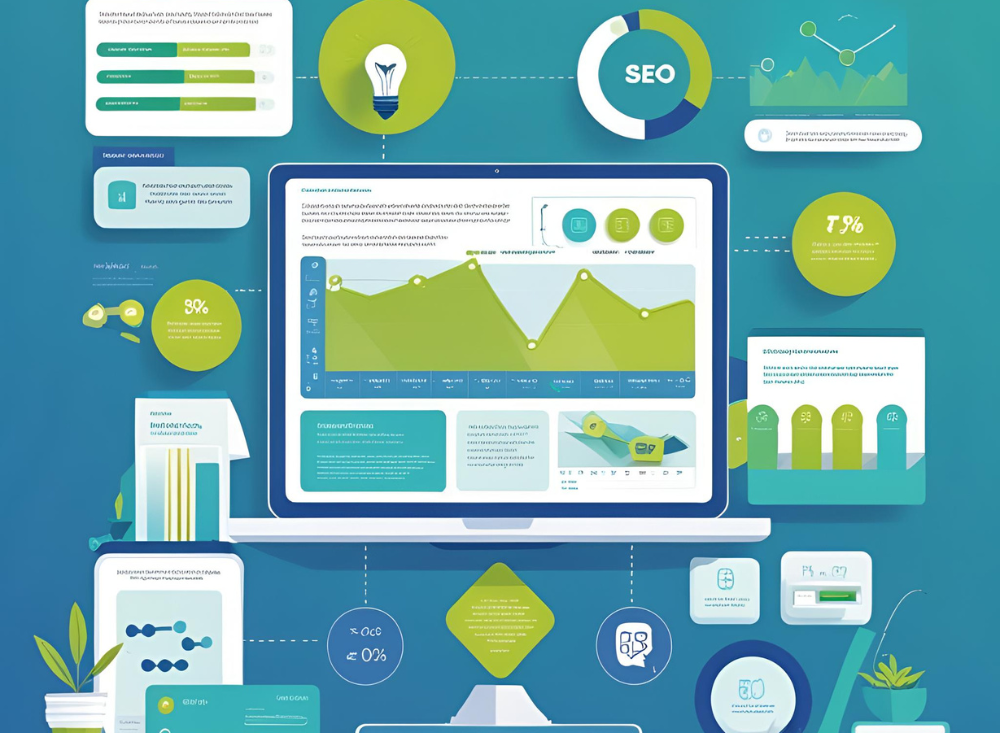
SEO reporting is the process of tracking, analyzing, and presenting data on your website’s search engine optimization performance. For beginners, creating effective SEO reports can seem daunting, but it’s a critical step to understanding what’s working and where to improve. This guide will walk you through the essentials of SEO reporting, with a mention of how tools like Salio.ai can simplify the process.
Why SEO Reporting Matters
SEO reports help you measure the success of your optimization efforts, identify areas for improvement, and communicate results to stakeholders (or yourself). They provide insights into traffic, rankings, and user behavior, allowing you to make data-driven decisions. A well-crafted report can also keep you motivated by showing progress over time.
Step 1: Define Your SEO Goals
Before diving into data, clarify what you want to achieve with SEO. Common goals for beginners include:
- Increasing organic traffic.
- Improving keyword rankings.
- Boosting click-through rates (CTR).
- Reducing bounce rates.
Action Tip: Write down 2-3 specific, measurable goals (e.g., “Increase organic traffic by 10% in 3 months”). Tools like Salio.ai can help you align your reporting with these goals by suggesting relevant metrics to track.
Step 2: Choose the Right Metrics
Focus on metrics that align with your goals. Here are key SEO metrics for beginners:
- Organic Traffic: The number of visitors coming from search engines. Check this in Google Analytics.
- Keyword Rankings: Where your website ranks for target keywords. Tools like Salio.ai can track rankings over time.
- Click-Through Rate (CTR): The percentage of users who click your site in search results. Find this in Google Search Console.
- Bounce Rate: The percentage of visitors who leave after viewing one page. Lower is better.
- Backlinks: The number and quality of external sites linking to yours. Use tools like Ahrefs or Salio.ai to monitor backlinks.
Action Tip: Pick 3-5 metrics that tie directly to your goals. For example, if your goal is more traffic, prioritize organic traffic, keyword rankings, and CTR.
Step 3: Use the Right Tools
SEO reporting is easier with the right tools. Here are beginner-friendly options:
- Google Analytics: Tracks traffic, user behavior, and conversions.
- Google Search Console: Monitors keyword rankings, CTR, and technical issues.
- Salio.ai: An AI-powered tool that simplifies SEO reporting by providing actionable insights, tracking keyword performance, and suggesting optimizations. It’s particularly useful for beginners due to its intuitive interface.
- Ubersuggest or Ahrefs (free versions): Track backlinks and basic keyword data.
Action Tip: Set up Google Analytics and Search Console for your website. Use Salio.ai to generate a simple report summarizing your top keywords and their rankings.
Step 4: Create a Simple SEO Report
A beginner’s SEO report should be clear and focused. Here’s a basic structure:
- Overview: Summarize your goals and key findings (e.g., “Organic traffic increased by 5% this month”).
- Traffic Data: Show total organic traffic and trends over time (use Google Analytics).
- Keyword Performance: List your top-performing keywords and their ranking changes (use Salio.ai or Search Console).
- Technical Health: Highlight any site issues, like broken links or slow load times, and steps taken to fix them.
- Next Steps: Outline actions to improve results, such as optimizing low-performing pages or targeting new keywords.
Action Tip: Create a one-page report using a tool like Google Sheets or Salio.ai’s reporting feature. Include a graph of organic traffic and a table of your top 5 keywords.
Step 5: Analyze and Act on Your Data
Reports are only useful if you act on them. Look for patterns in your data:
- What’s working? If a blog post ranks well, create similar content.
- What’s not? If a page has a high bounce rate, improve its content or user experience.
- Opportunities: Use Salio.ai to identify low-competition keywords or content gaps in your niche.
Action Tip: Review your report and pick one action to implement, like updating a page’s meta description to boost CTR.
Step 6: Schedule Regular Reporting
Consistency is key in SEO. Set a schedule for reviewing and updating your reports:
- Weekly: Check keyword rankings and quick wins (e.g., fixing broken links).
- Monthly: Analyze traffic, CTR, and bounce rate trends.
- Quarterly: Assess overall progress toward your goals and adjust your strategy.
Salio.ai can automate parts of this process by sending regular updates on your SEO performance, saving you time.
Action Tip: Set a calendar reminder to review your SEO report monthly. Use Salio.ai to automate keyword tracking and receive alerts about significant changes.
How Salio.ai Can Help
Salio.ai is a beginner-friendly tool that streamlines SEO reporting. It offers:
- Keyword Tracking: Monitor rankings and discover new keyword opportunities.
- Site Audits: Identify technical SEO issues with easy-to-follow fixes.
- Custom Reports: Generate clear, visual reports tailored to your goals.
- Competitor Analysis: See how your site stacks up against competitors.
By using Salio.ai, you can focus on improving your site rather than getting lost in complex data.
Final Thoughts
SEO reporting doesn’t have to be complicated. By setting clear goals, tracking the right metrics, and using tools like Google Analytics, Search Console, and Salio.ai, you can create simple, actionable reports that drive results. Start small, stay consistent, and use your insights to refine your SEO strategy.
Next Steps: Set up Google Analytics and Search Console, then use Salio.ai to track your top 5 keywords. Create your first SEO report this week and take one action based on the data.